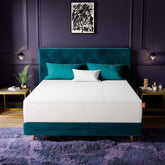The Sweetest DIY Easter Activity for Kids: Marshmallow Egg Magic
Introduction
Easter in America is more than a holiday — it's a celebration filled with creativity, color, and family fun. One beloved tradition is crafting homemade Easter eggs, which bring a personal, heartfelt touch to the season. Many families move beyond store-bought plastic eggs and get hands-on with DIY creations that reflect their personality and style.
1. How homemade eggs make celebrations special
In the U.S., people love making hand-painted eggs, dyed natural eggs, and increasingly — marshmallow-based eggs. These eggs aren't just decorations — they become centerpieces for egg hunts, brunch tables, and Easter baskets. What makes them truly special is the time, love, and laughter shared during the process. Kids and adults alike get involved, turning simple ingredients or materials into mini works of art. Whether it’s glitter, stickers, or custom colors, each egg carries a memory.
2. The Fun of Using Marshmallows
This year, marshmallows are stealing the show — and for good reason. They’re fun, simple, and bursting with color. Marshmallows can be shaped into all kinds of playful forms, including: Easter eggs, Bunnies, Spring flowers.
The most exciting part? The texture. Soft, stretchy, and perfect for pulling and molding, marshmallows make crafting feel like playtime.
3. Quick Stats: DIY Decorations on the Rise
Did you know 75% of American families now include homemade decorations in their Easter plans? From hand-painted wooden eggs to paper bunny garlands, the trend is booming. But the most popular by far? Egg decorating — it’s the iconic, must-do activity that brings everyone together at the table.
4.Easy steps and creative ideas for perfect marshmallow eggs.
You don’t need a fancy setup to make amazing marshmallow eggs. Just follow these simple steps:
(1) Cook your syrup – Mix sugar, water, and gelatin to make a thick base.
(2) Divide and color – Pour into bowls and mix in your favorite Easter colors.
(3) Pull and shape – Use oiled hands to stretch and form egg shapes, just like traditional Chinese pulled sugar techniques.
(4) Add details – Use sprinkles, chocolate, or food markers for eyes, stripes, or patterns.
(5) Let them set – Wrap them up in clear bags or nest them into baskets for a sweet, decorative finish.

Materials and Tools Preparation for Colorful Marshmallow Easter Eggs
1. Core Ingredients
(1) 500g white sugar (or rock sugar)
(2) Edible food coloring (red, yellow, blue, etc. — gel type recommended)
(3) Bamboo sticks/thin wooden rods (20–30 cm in length)
2. Essential Tools
(1) Copper pot or thick-bottomed stainless steel pot (for even heat distribution)
(2) Sugar pulling frame (or handheld electric cotton candy machine)
(3) Scissors, parchment paper (non-stick)
3. Optional Decorations
Edible gold dust, rice paper prints

Step-by-Step Guide to Making Marshmallow Easter Eggs
Step 1: Cook the Sugar Syrup
Instructions:
Pour the sugar into a copper pot and add a small amount of water (sugar:water = 10:1). Heat over medium heat until the temperature reaches 160°C (320°F). The syrup should turn amber in color and form threads when dipped and pulled with chopsticks.
Key Tips:
Do not stir the syrup to avoid crystallization. Gently swirl the pot to distribute heat evenly.
Add 1 drop of lemon juice to prevent recrystallization (sugar return).
Step 2: Color and Divide the Syrup
Instructions:
Pour the cooked syrup into small bowls. Add different food coloring to each bowl (e.g., pink, yellow, blue) and stir quickly to combine.
Pro Tips:
Add gel-based coloring while the syrup is still hot (above 120°C / 250°F) for better color blending.
Keep the syrup warm (above 80°C / 175°F) after coloring to prevent it from solidifying.
Step 3: Pull and Shape the Sugar Threads
Traditional Hand Method:
Dip a bamboo stick into the syrup and swing it in fast circles around the pulling frame to create thin threads.
Alternate colors while layering the threads to build an oval egg shape.
Finish with a layer of clear syrup to seal and add shine.
Electric Machine Method:
Pour the syrup into a cotton candy machine, catch the spun sugar with a bamboo stick, and shape it by hand into an egg form.
Step 4: Add Detail and Decoration
Surface Texture:
Use warm scissors to trim and shape the surface, creating a “feather-like” texture.
Decorate:
While the sugar is still slightly tacky, dust with edible gold powder or apply rice paper prints (such as Chinese characters like “福” for good luck).
Step 5: Set and Package
Curing:
Let the eggs sit in a cool, dry place for 10 minutes to harden. Avoid humid environments.
Packaging:
Wrap in breathable parchment paper (to prevent sticking) and tie with twine for a handmade, rustic finish.
Key Technical Tips
Temperature Control:
If the sugar syrup is cooked below 140°C (284°F), the sugar threads break easily; if it exceeds 170°C (338°F), the syrup will burn and caramelize.
Color Layering:
Each layer of sugar thread should be applied with even thickness to avoid muddy or blended colors.
Humidity Sensitivity:
When air humidity exceeds 60%, the sugar threads easily absorb moisture and become sticky. It's recommended to use air conditioning or a dehumidifier during production.

Production principle
1. Sugar-to-Water Ratio
To start, mix white granulated sugar and water in a 10:1 ratio — for example, 500 grams of sugar with 50 milliliters of water. This small amount of water helps the sugar dissolve smoothly but won't overly dilute the syrup, which is important for achieving the right texture.
2. Cooking Time
Bring the sugar-water mixture to a boil over medium heat. Depending on the amount, the process usually takes 10 to 15 minutes. You should monitor the color and consistency as it cooks — it will gradually turn from clear to light yellow, and finally to a rich amber color.
3. Temperature Control
Temperature is critical for perfect sugar syrup:
You need to heat the mixture to 160°C (320°F) — known as the "hard crack" stage — which allows the sugar to form fine, strong threads that can be pulled or spun.
Do not stir the syrup while it boils, as this can cause crystallization. Instead, gently swirl the pot if needed to distribute heat evenly.
Optionally, adding 1 drop of lemon juice can help prevent the sugar from crystallizing.
4. Pulling Into Silk-like Threads
The pulling begins after the cooked sugar syrup reaches the hard crack stage (around 270-300°F) and cools slightly to be pliable. A thick sugar ring is formed and looped around a tool. Through repeated stretching and folding, doubling the strands each time, it takes roughly 8-12 pulls to transform into thousands of fine, hair-like threads.
5. Shaping and Cooling Process
This section focuses specifically on the critical steps you mentioned, during the final shaping and setting of the sugar strands:
Timing and Techniques for Forming the Egg Shape
(1). Judging the Right Moment for Shaping the Sugar
Optimal Timing:
Begin shaping when the spun sugar wraps around the bamboo stick to a diameter of approximately 5–8 cm (roughly tennis ball-sized), with strands that appear semi-transparent and glossy, and feel slightly tacky but not fragile or brittle.
Physical Indicators:
The sugar strands, after being exposed to air for 10–15 seconds, form a thin, matte surface layer — a sign of early crystallization.
While spinning the stick, the strands maintain a continuous arc without dripping or snapping.
(2). Step-by-Step Shaping Techniques
Step One: Basic Ellipsoid Formation
Wear food-safe gloves to prevent sticking. Use a gentle "cupping" gesture with both hands to shape the sugar mass. Perform the following:
Vertical Compression:
With palms facing each other, gently press from the top and bottom to elongate the shape to a height-to-width ratio of 1:1.5, mimicking the upright oval shape of an egg.
Horizontal Smoothing:
Rotate the bamboo stick horizontally while using your fingertips to adjust the curve of the sides, smoothing out any irregular bumps.
Step Two: Fine Detail Adjustments
Tip Refinement:
Using damp scissors, carefully trim both ends of the egg to form soft, rounded tips, similar to the ends of a real egg.
Texture Enhancement:
While the sugar strands are still pliable, lightly score the surface with a toothpick to create fine, shell-like hairline cracks, adding realistic texture.














